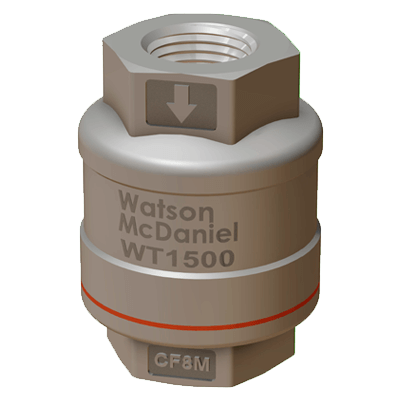Description
WT2000 Thermostatic Steam Traps are extremely energy efficient and excellent at discharging air allowing steam to enter the system quickly during system startup. Models are available in Stainless and alloy steel for Drip, Tracing, and medium size Process applications. Pressures up to 650 psig.
- Superior air venting capability and extremely energy efficient
- Single model operates over the entire pressure range in contrast to (F&Ts & IBs)
- Considerably Smaller in size than F&Ts & IB traps of similar capacities
- Self-draining to prevent freezing (unlike F&Ts and IB traps)





